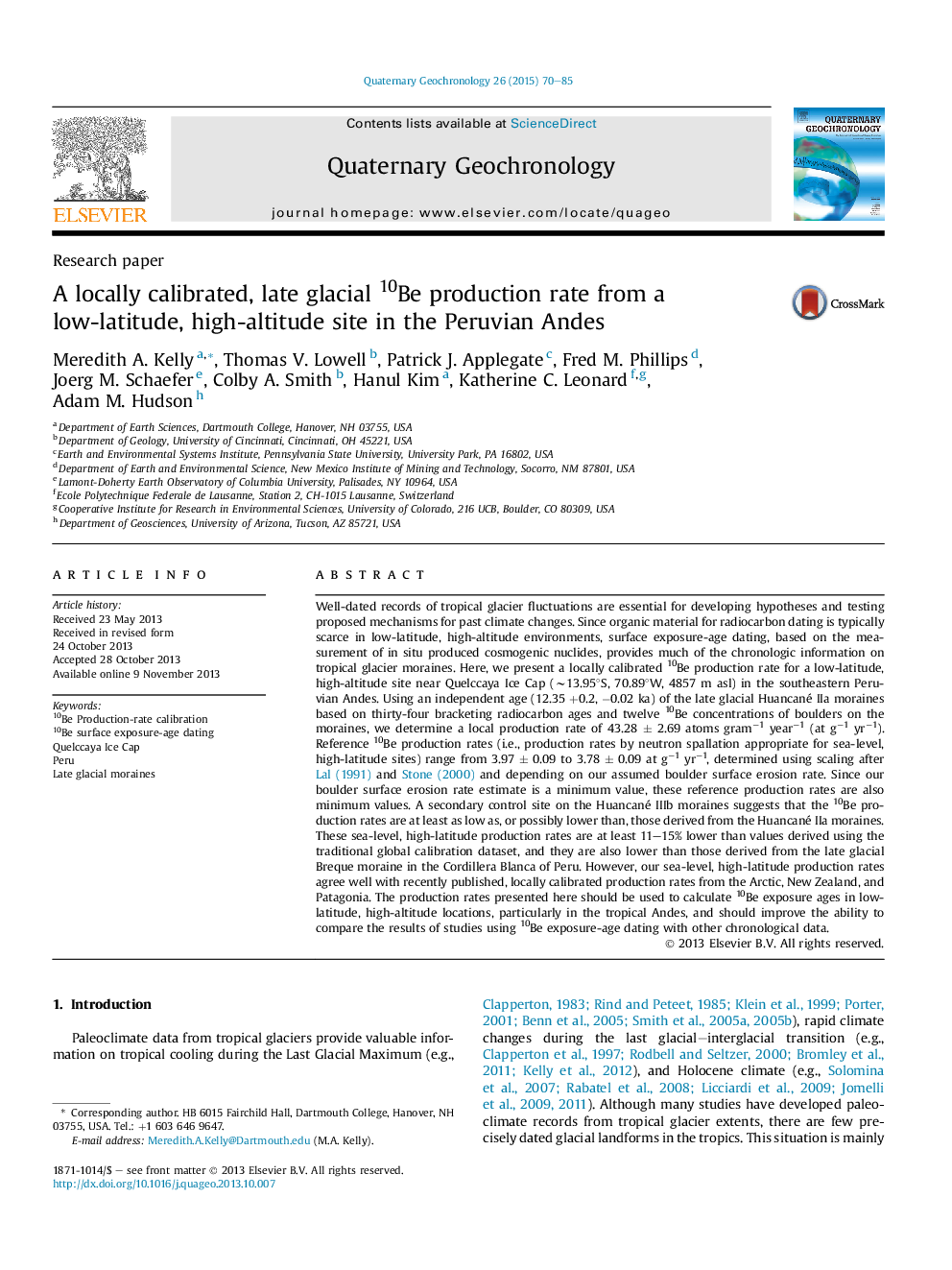| Article ID | Journal | Published Year | Pages | File Type |
|---|---|---|---|---|
| 4724922 | Quaternary Geochronology | 2015 | 16 Pages |
•We determine a local 10Be production rate for a low-latitude, high-altitude site.•This production rate is lower than the global production rate by at least 11–15%.•This production rate agrees well with other locally calibrated production rates.•This will improve applications of 10Be dating at low-latitude, high-altitude sites.
Well-dated records of tropical glacier fluctuations are essential for developing hypotheses and testing proposed mechanisms for past climate changes. Since organic material for radiocarbon dating is typically scarce in low-latitude, high-altitude environments, surface exposure-age dating, based on the measurement of in situ produced cosmogenic nuclides, provides much of the chronologic information on tropical glacier moraines. Here, we present a locally calibrated 10Be production rate for a low-latitude, high-altitude site near Quelccaya Ice Cap (∼13.95°S, 70.89°W, 4857 m asl) in the southeastern Peruvian Andes. Using an independent age (12.35 +0.2, −0.02 ka) of the late glacial Huancané IIa moraines based on thirty-four bracketing radiocarbon ages and twelve 10Be concentrations of boulders on the moraines, we determine a local production rate of 43.28 ± 2.69 atoms gram−1 year−1 (at g−1 yr−1). Reference 10Be production rates (i.e., production rates by neutron spallation appropriate for sea-level, high-latitude sites) range from 3.97 ± 0.09 to 3.78 ± 0.09 at g−1 yr−1, determined using scaling after Lal (1991) and Stone (2000) and depending on our assumed boulder surface erosion rate. Since our boulder surface erosion rate estimate is a minimum value, these reference production rates are also minimum values. A secondary control site on the Huancané IIIb moraines suggests that the 10Be production rates are at least as low as, or possibly lower than, those derived from the Huancané IIa moraines. These sea-level, high-latitude production rates are at least 11–15% lower than values derived using the traditional global calibration dataset, and they are also lower than those derived from the late glacial Breque moraine in the Cordillera Blanca of Peru. However, our sea-level, high-latitude production rates agree well with recently published, locally calibrated production rates from the Arctic, New Zealand, and Patagonia. The production rates presented here should be used to calculate 10Be exposure ages in low-latitude, high-altitude locations, particularly in the tropical Andes, and should improve the ability to compare the results of studies using 10Be exposure-age dating with other chronological data.
